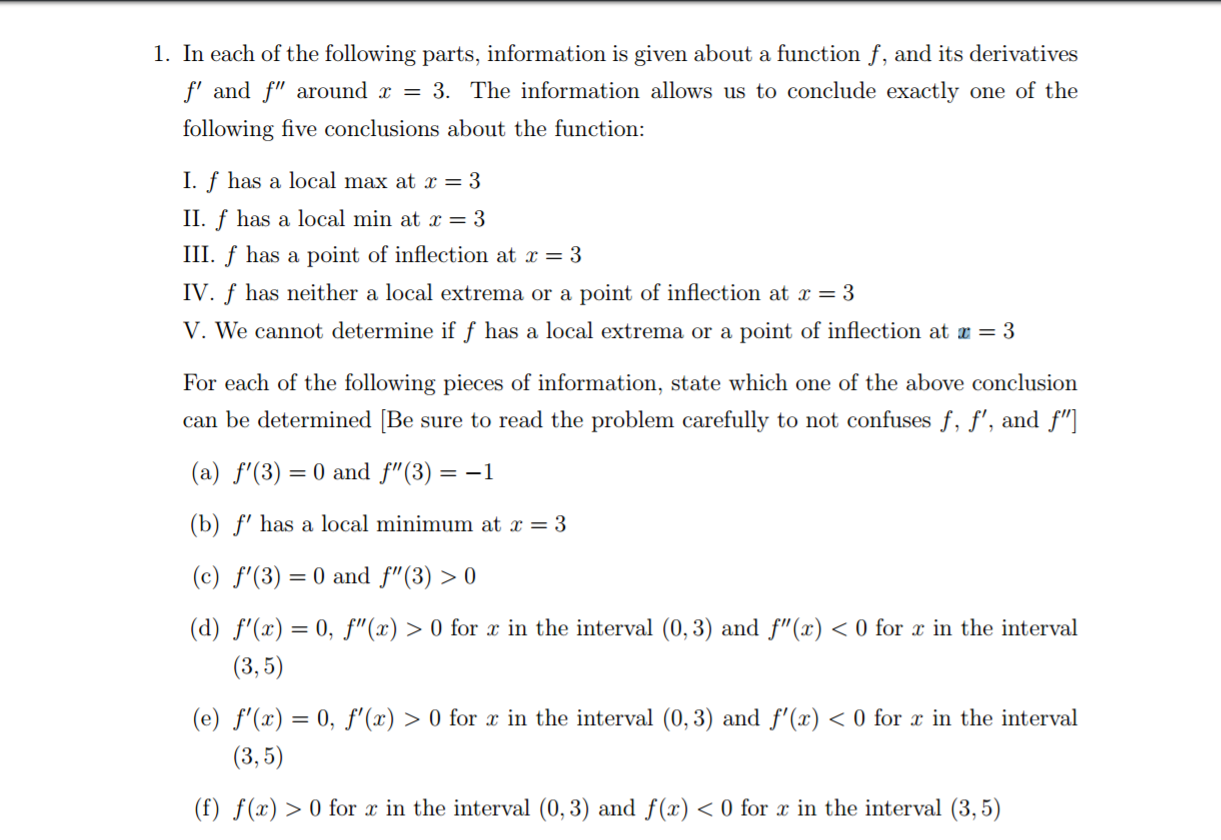#(a)# Conclusion #I.#
Since #f'(3)=0#, there is a possibility that there is an extrema at #x=3#. Since #f''(3)=-1#, we know it is concave down at #x=3#, and therefore the critical point will be a maximum, meaning conclusion #I# is correct. This rules out conclusions #II#, #IV#, and #V#. Since the function is concave down at #x=3# there is no point of inflection at #x=3#, meaning we rule out conclusion #III#.
#(b)# Conclusion #III#
If #f'# has a local minimum at #x=3#, that means the concavity of the function will change from concave down to concave up at #x=3#, implicating an inflection point, which supports conclusion #III#. This rules out conclusions #IV# and #V#. We do not have enough information to determine whether #f(3)# is an extrema, so we rule out conclusions #I# and #II#.
#(c)# Conclusion #II#
Like part #(a)#, we find a possibility of an extrema at #x=3#. Since #f''(3)# is positive, we know that the function is concave up at #x=3#, and therefore the critical point will be a minimum, meaning conclusion #II# is correct. This rules out conclusions #II#, #IV#, and #V#. Since the function is concave up at #x=3# there is no point of inflection at #x=3#, meaning we can rule out conclusion #III#.
#(d)# Conclusion #III#
The function is concave up to the left of #x=3# and concave down to the right of #x=3#. This change in concavity means a point of inflection occurs at #x=3#, supporting conclusion #III#. This rules out conclusions #IV# and #V#. We don't know what #f''(3)# is, so we can't make conclusions about whether #f(3)# is a maximum or minimum, so we can rule out conclusions #I# and #II#.
#(e)# Conclusion #I#
The function is increasing on the left of #x=3# and decreasing on the right of #x=3#. This means that there is a maximum at #x=3#, supporting conclusion #I#. This rules out conclusions #II#, #IV#, and #V#. We don't have enough information to determine whether there is an inflection point at #x=3#, so we can rule out conclusion #III#.
#(f)# Conclusion #V#
We know the function is positive on the left of #x=3# and negative on the right of #x=3#. This does not tell us anything about the rate of change or concavity, so we don't have enough information to say whether there is an extrema or if there is an inflection point, so this supports conclusion #V#.

